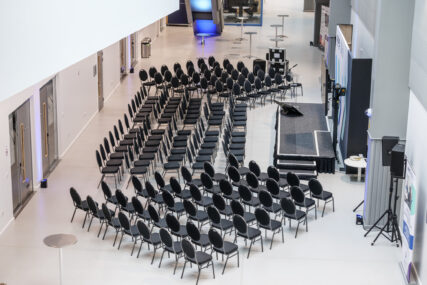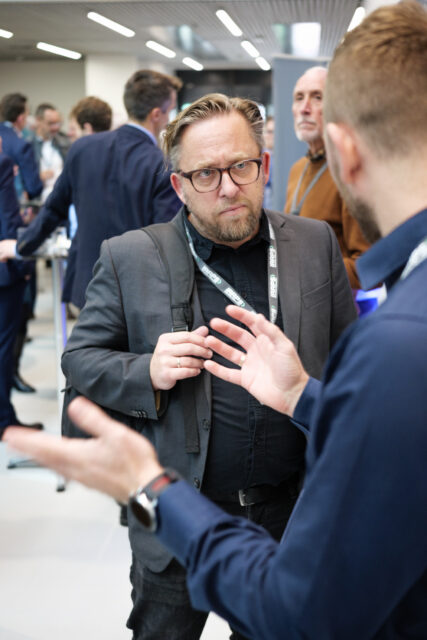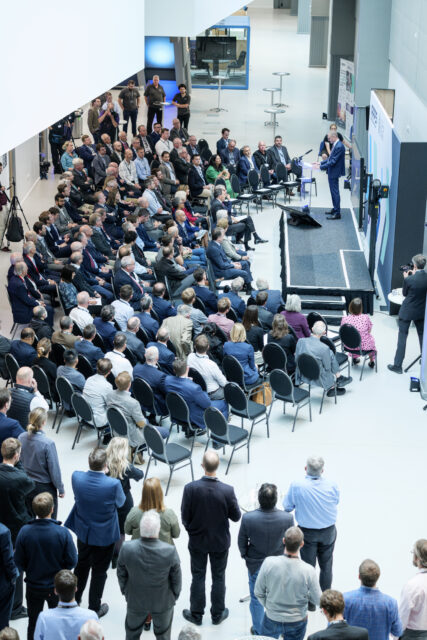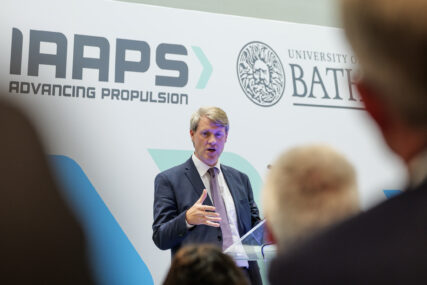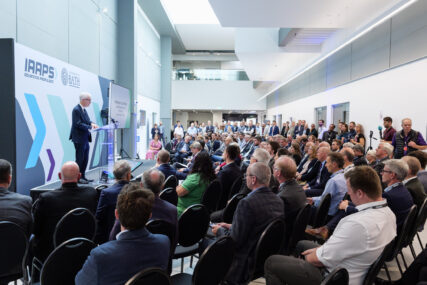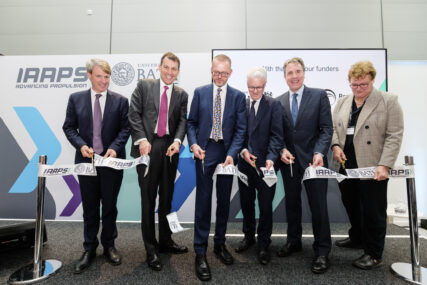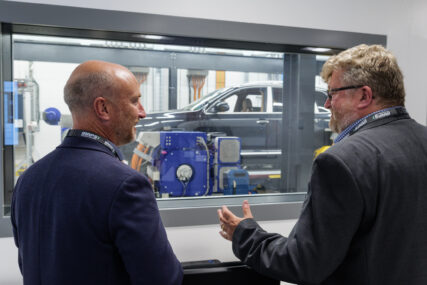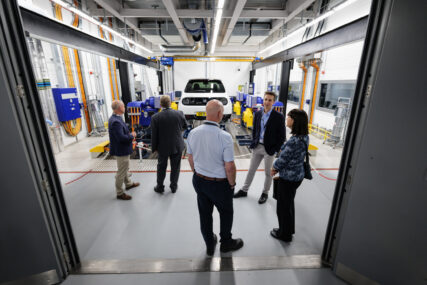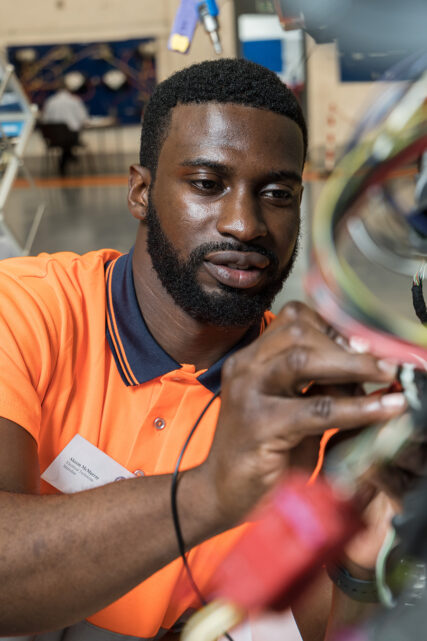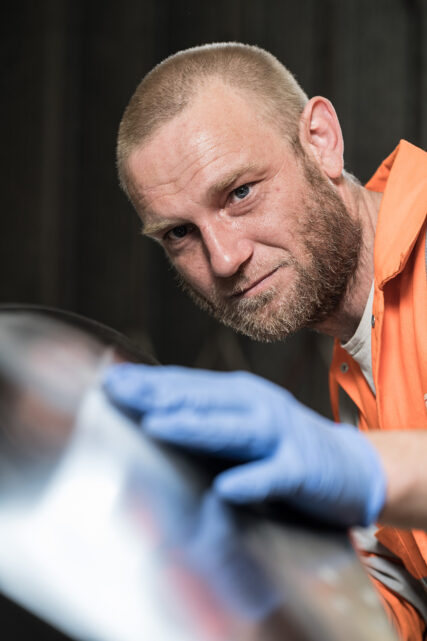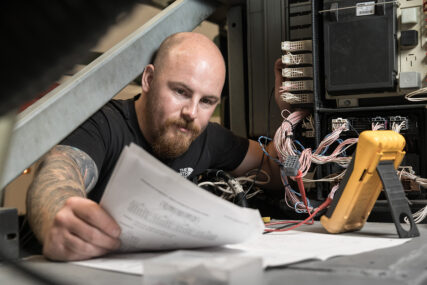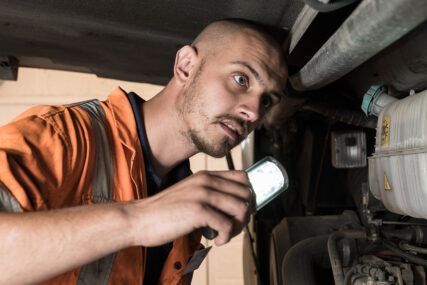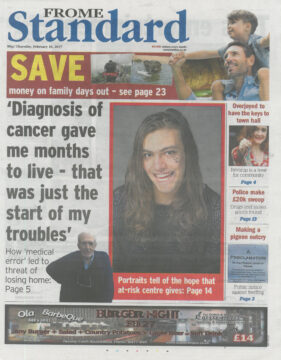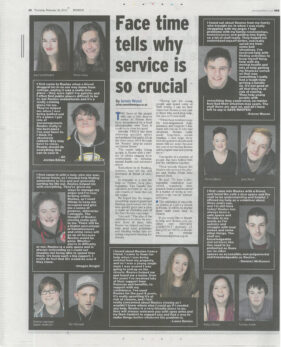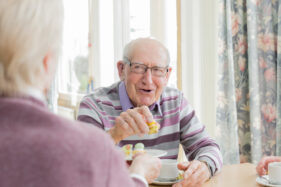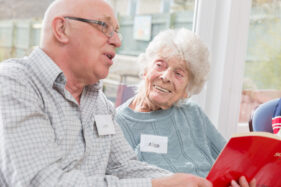Following on from my previous post focusing on my work with advanced propulsion R&I centre IAAPS (IAAPS for short) near Bristol, this week’s post centres on the official launch held in September last year.
However, rather than talk specifically about the opening itself, I’m going to use this as a case study to delve into the logistics and thought processes employed when covering an event like this.
This area of photography uses a different part of the brain from industrial work, which is very measured, precise and considered compared to the fly-on-the-wall, reactive style required for an official opening, especially one on the scale of the IAAPS launch.
The truth is, I enjoy both. Industrial photography is a chance to slow down, be methodical and produce images with a bit more finesse, while the launch event gets my editorial brain whirring. I’m having to react to emerging scenarios as I work my way through the brief and the events as they unfold.
Each aspect of an event like this requires a subtly different approach; choices around composition, timing, reading the light, lens selection – at times I’m making multiple decisions all at once. In these situations it helps to have both cameras on my shoulders; one for wide shots, and the other for long shots, which saves a lot of lens swapping.
And yet I have to remain calm and composed because no one needs a stressed photographer in the room.
Keeping a level of control starts with having a properly constructed brief in advance of the event, something IAAPS’ head of marketing communications is good at.
Armed with a solid brief, I can keep an eye on the timings of various key moments as well as check off the pictures I’ve achieved. Having a list I can work through methodically means I can keep the scale of the task in context. I can also look for additional off-brief pictures.
Reacting to changing moments and requirements is where the stress can creep in once again, but knowing how to pace a job and when to tie up an element of coverage is a skill in self-management.
For example, it’s easy to get bogged down in trying to capture absolutely everyone as they gather and chat. These make for good “flavour of the day” pictures, but not every attendee needs to be recorded. These pictures have their uses, but at some point, I have to gauge when opening speeches are about to start.
For this, I have one eye on the schedule, and one on the key speakers. Their behaviour changes as they realise they’re about to step up to the podium, and that’s my cue to ensure I have the right kit and settings already sorted.
Of course, I will have arrived ahead of the event to check out things like the light levels on the stage or the positioning of the podium, but these can change at the last minute, so it’s good to do a final check before speeches and presentations kick-off. Ideally, I’m in position before the speaker steps up onto the stage.
For speeches, I’m looking to capture the speakers with their heads up, eyes open and preferably making some kind of hand gesture. It’s also important to capture a variety of shots with design space around the subject, as well as a choice of upright and landscape orientations.
All this is to ensure that when the images are put out to press release, there’s something to fit the space on the page. If they’re used in corporate communications, either online or in print, that design space might be handy for a text box or graphic element.
Simultaneously, I’ll be looking for interesting and unusual angles, tight shots on the speakers as well as wider views showing the venue and audience.
If a speech is only a few minutes long, I have to make sure I divide the time carefully and prioritise the must-have images over the nice-to-have extras.
In the case of the IAAPS launch, there was a series of speeches followed by a ribbon-cutting. So I made sure that as the final speech drew to a close, my kit and I were both ready for that moment. This included organising the group, arranging the props and making sure the photographer behind me, who’d brought the wrong lens for the job, could also get a few shots without the back of my head being in the way.
This particular event was a busy one. After the ribbon cutting came tours of the facility for stakeholders and members of the press, so I was back in fly-on-the-wall mode, looking for interactions between visitors and the cells and capturing more images for potential press and industry journal use.
With an event like this, it’s important to pace the coverage. It’s too easy to get into a spin or to phase out and lose concentration. To most people, it might look like ‘just taking pictures of something happening’, but without a considered and measured approach, things can run away from the photographer very quickly. It’s important to take a moment every so often to pause and re-check the brief, the progress and the next stage, all while looking for ways to ensure the resulting pictures have as much impact as possible.
While there were no surprises at the end of this event, I always check in with my lead contact before pulling away. It’s also a good chance to double-check any urgent image requirements as sometimes the client will want a selection for immediate social media use or a press release.
Of course, the end of a job isn’t the end of the job; there’s captioning, editing, filing, supply and a whole load of other tasks around fully completing a job. Perhaps that’s a blog post for another time though. After 951 words, it’s time to take a break.

